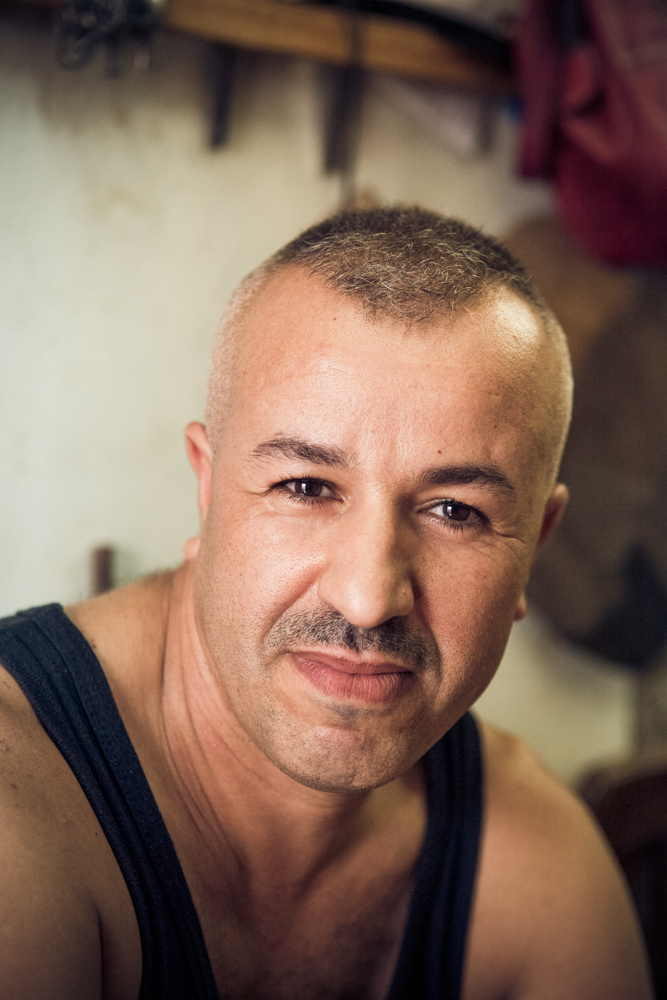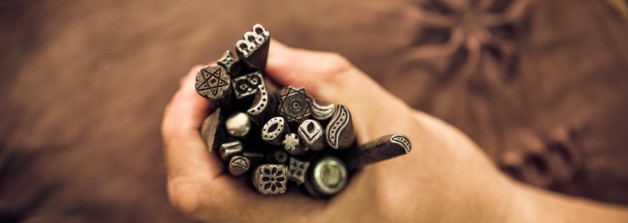The Leather Artisan Stands Out in an Industrialized World.
Today machines might well be dominating every industry. Yet artisans in Morocco are doing their best to stay in constant competition with the massive industrial imitation that is imported from numerous countries. What was once the primary market for hand made objects for daily use in homes has now been filled with mountains of cheap plastic and machine fabricated replacements. This has been very hard on the many artisans who work long days to make beautifully crafted and enduringly practical objects for everyday life.
When I was living in Tetouan, and one of the reasons Why I Love Tetouan’s Medina, I was lucky enough to get to know one of Tetouan’s most skilled and innovative leather workers. His name is Layachi Azajjal.

Layachi Azajjal at work – Photo by Lauren diMatteo
Layachi works in the artisan co-op or ensemble in Tetouan, just outside the medina, along with more than 20 other Tetouani leather artisans. Layachi was born and raised in Tetouan, he has been doing this job for more than 30 years. He learned his skills from different masters at a very young age before finally earning his place as a leather master himself. For many years he had his own hanut, or shop, in the medina near the ancient tannery, but he recently moved his production to the royal artisan cooperative.

Layachi’s medina hanut – Jeff McRobbie
Protected Workshops for the Leather Artisan
The artisan co-op is a government sponsored cooperative, where leather workers, carpet makers, textile weavers, jewelers, metal smiths, woodworkers and other artisans can collaborate and share tools. This format allows for visitors to see many artisanal traditions all under one roof, and the artisans don’t have the overhead expenses of individual shops. The leather artisans work together, sharing a huge room with one big entrance and a full wall of large sunny windows. Each leather worker has his own small work space with a thick stone slab, chair and box of magic tools: scissors, texturing & line making tools, knives and engraved brass stamps. In the middle of the space are several industrial sewing machines, shared by all.
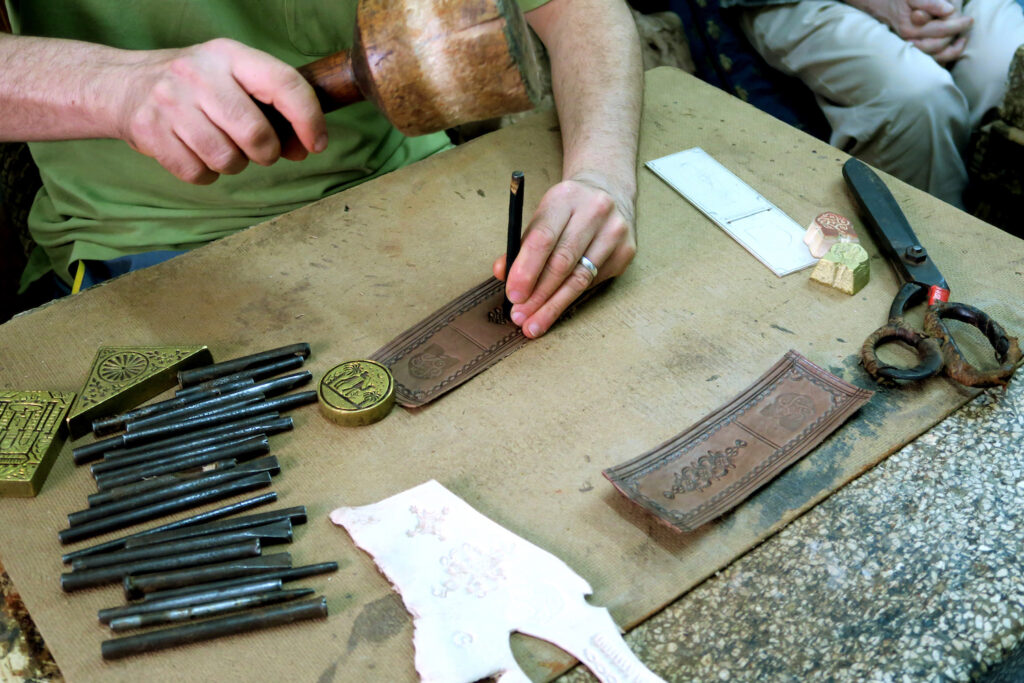
Leather artisan & his tools – making bookmarks – photo by Jeff McRobbie
I’ve always had a love and admiration for traditional Moroccan crafts and have spent too years blaming myself for not learning one. Especially having lived in Tetouan for several years now. Finally I got the courage and decided to ask Layachi if he would be willing to teach me some of his craft. I didn’t even call … I just went there hoping he would be there. As a residency assistant at Green Olive Arts, I’ve had the good fortune to visit many times and become acquainted with some of these wonderful craftspeople. I felt surprisingly at home with just showing up with such a request.
After a cup of mint tea and a chair borrowed from his colleague, both of which Layachi offered as a welcome to his workshop, he introduced me to some of his other trainees. I did not expect to find other Moroccan women who are interested in Leather, but here they were, just like me. In Morocco women tend to go toward weaving and embroidery … rarely leather. I was beyond happy to see other girls my age who were interested and already learning!
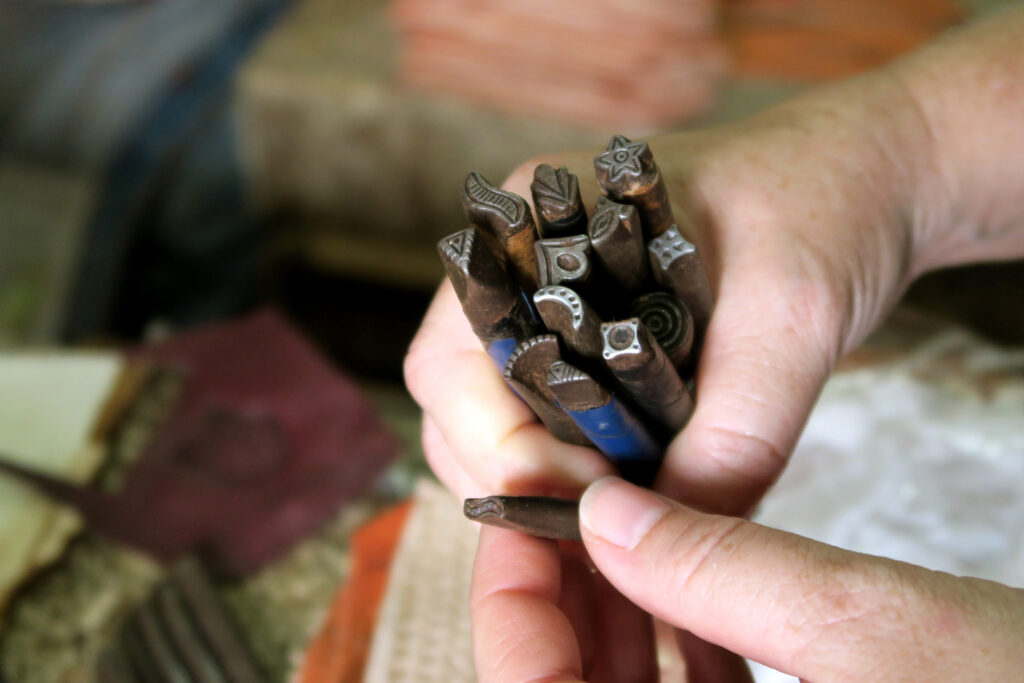
Leather texturing tools, some nearly 100 years old & others recently made
A Whole New World
While I sipped my tea, Layachi oriented me to the tools he uses to make his exceptional art. Explaining to me briefly different types of leather and his sources for each, as well as the special glues they make to attach pieces together. He proudly talked about all the collaborations he’s had with Green Olive Arts artists and even showed me pictures. According to him, such collaborations are so important for him and other artisans, because they are not only another way for them to exhibit their works, but they also develop new ideas and skills out of it. When artists return to their home countries with work and documentation of the collaboration, people all over the world get to see their handiwork and it grows appreciation (and market demand) for their work.
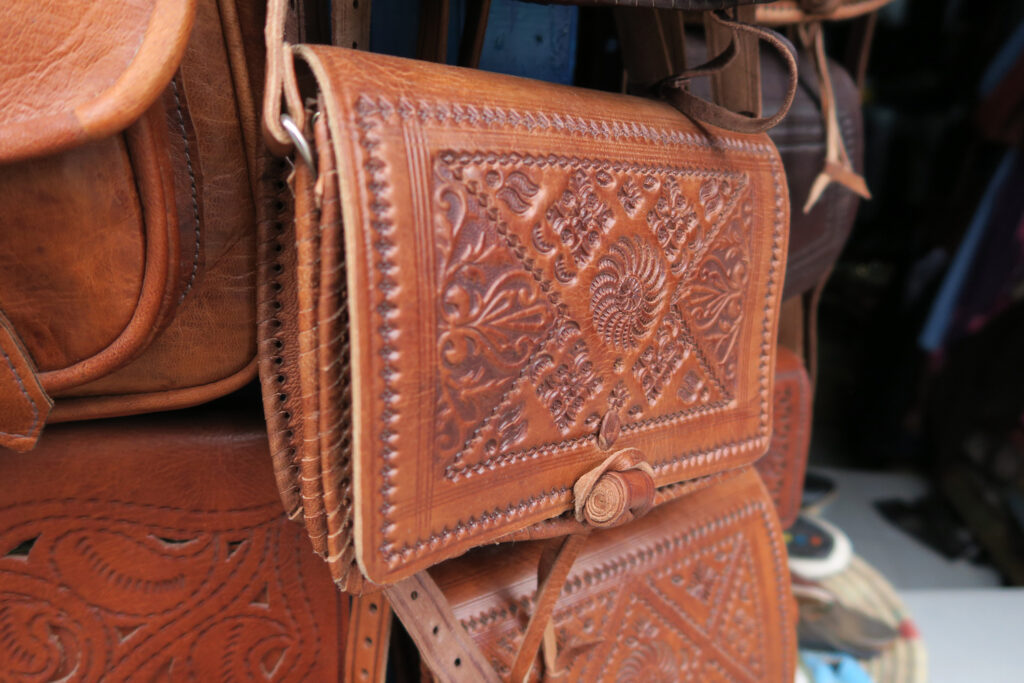
Tetouan is a richly diverse city, a combination of cultures and colors … a gem in Morocco. It is home to ancient authentic arts, where artisans to this day are still using their creativity and hand tools to create beautiful Andalusian, Berber, and Mediterranean influenced objects … in spite of massive industrial imitation. I am thankful for my time in Layachi’s workshop alongside those other young women. We learned an artisan’s skill, we gained some pride in our country’s traditions and we may have even established a new direction for women in the leather craft of Morocco. It turns out it is a growing movement … There’s even a whole Women’s Leather Collective in Marrakech.
Thank you Layachi Azejjal, for encouraging this young artisan-to-be!
